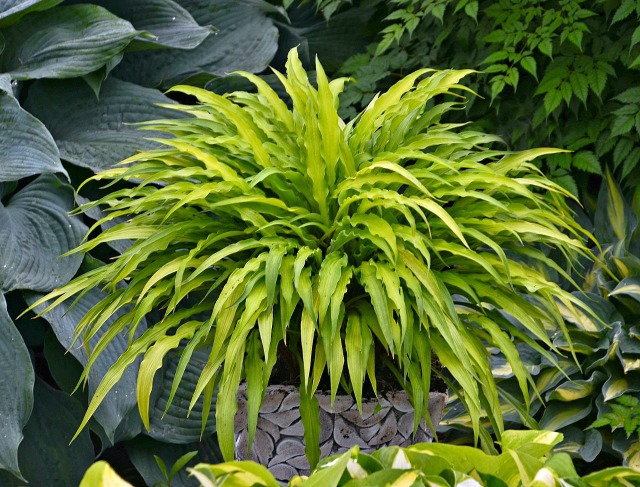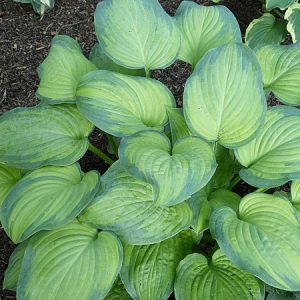Attention all Gardeners
Join our group!
There are many opportunities to add to your hosta garden! Plus, you’ll meet hosta lovers who share your love of hostas and other shade plants. Just $10 a year.

Who We Are:
Southwest Michigan Hosta Society is a group of people that get together to discuss hosta, gardening ideas, techniques, and ways of bettering our landscape. We take a yearly bus trip that is paid for by annual dues. The society also communicates and participates with other local societies, as well as state and regional hosta societies. Check out our Events for meetings, trips, and educational opportunities.
What Are Hostas?
Hosta plants are herbaceous perennials. The most natural way to group them is by leaf color. The foliage can be blue, gold (yellow), or green. Or sometimes, one will find a pleasing blend, as when there’s just enough yellow and green to form chartreuse. In addition to all this variety in color, these stars of the foliage world are often variegated.
As if all this wasn’t enough, the leaves of hosta plants come in a number of sizes and shapes. Shapes can be elongated (sword-shaped, for instance) or something more rounded (such as those with heart-shaped leaves). In some cases, leaves are flat; in others, concave. Finally, leaf surfaces may be smooth or bubbled (the technical term for this bubbly look is “seersuckered”). Hosta plants also produce flowers, and these, too, exhibit variation, both in color and size.
Hostas are usually treated as shade plants since the colors of their foliage tend to fade if exposed to too much sun. The gold-leafed types of hosta plants are an exception: they will not attain their maximal golden color without receiving quite a bit of sun. By contrast, most green-leafed and blue-leafed hosta plants will lose the rich color of their foliage if they receive too much sun. However, since fragrant hostas need some sunlight for full flower development, you may wish to make an exception for them, or else you’ll miss out on their wonderful aroma.

